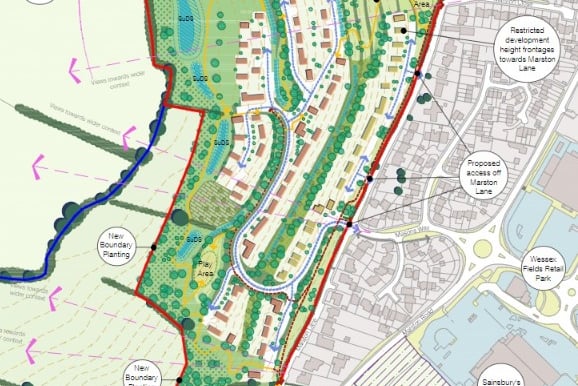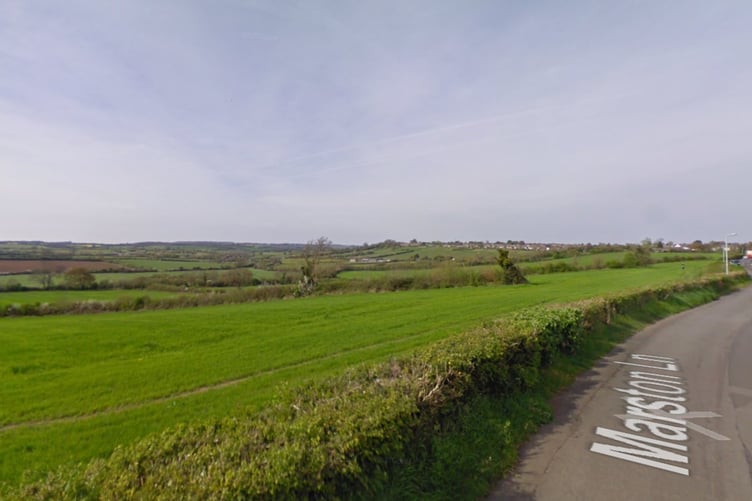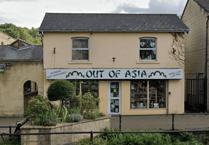Frome residents can breathe a sigh of relief after plans for one hundred and fifty homes on the edge of their town were thrown out by a planning inspector.
Gleeson Strategic Land Ltd. put forward initial proposals (known as a screening option) in December 2021 to build up to one hundred and eighty homes on the western side of Marston Lane in Frome, located off the busy B3090 Marston Road.
The Fleet-based developer subsequently submitted an application to Mendip District Council, slightly reducing the total number of homes to one hundred and fifty and including a community hub at the southern edge.

The council refused these plans in June 2022, claiming the site cannot be accessed safely and would have a “significant adverse impact” on existing residents.
Following a public inquiry in January, the Planning Inspectorate has now upheld the council’s refusal – meaning the homes cannot go ahead.
The site is not included in either the council’s original Local Plan (which was adopted in December 2014) or the additional allocations within the Local Plan Part II (which was ratified by councillors in December 2021).
The land does lie within the parish of Frome, a short distance from the town’s Sainsbury’s supermarket, but it lies outside the defined development boundary of the town as set by the council’s Local Plan.
Julie Reader-Sullivan, the council’s head of service for planning and growth, identified six reasons for refusing the plans:
- The site is located in “open countryside” and is therefore “considered unsuitable for further housing growth within the town”.
- The prominent nature of the site would lead to a “a significant adverse impact” on the local landscape and the existing views of Frome.
- The developer has provided “insufficient information” about how local heritage and archaeological assets would be protected.
- The developer has not indicated how it would contribute towards new school places or improvements to the Beckington and White Row roundabouts on the busy A36.
- The development cannot be safely accessed, with the plans “resulting in highway safety concerns for existing and proposed users”.
- The developer has not demonstrated how the risk of flooding would be mitigated, both for the site and the wider area.
Planning inspector Owen Woodwards chaired the inquiry, which was held over five days between the 10th and 20th January and included a site visit on January 11th.
He published his verdict on the Planning Inspectorate’s website the day after one of the final meetings of the council’s planning board.
Mr Woodwards said that the site was too far from the town centre to be considered sustainable, even with the provision of cycling facilities and the existence of a local bus service.
He said: “A significant proportion of journeys made by the future occupants of the proposal would likely be by car, particularly due to the long walking distance to the town centre and schools and the relatively limited and infrequent bus service provision, which only operates hourly or on the half hour at peak."
“The appeal site is only moderately accessibly located. It is not isolated in the countryside but neither is it particularly well connected."
“I do not consider the site to be in a most sustainable location on the edge of Frome.”
In addition to the lack of local services, Mr Woodwards said developing the site would have a negative impact on the character of the local area and Frome in general.
He said: “The appeal site is largely open countryside on a prominent slope, facing outwards over a largely unspoilt valley. Its elevation and slope make it particularly prominent."
“These factors exacerbate the harm caused, which would be visible from many vantage points and by sensitive receptors such as users of footpaths and local residents."
“In addition, existing views from along Marston Lane are a notable feature of the existing area, and the proposal would cause significant harm to these views because the outlook would be narrowed significantly and would be through built form, rather than over an open slope.”
Mr Woodwards added that the loss of existing hedgerows within the site would cause short-term ecological damage, which outweighed any net increase in biodiversity that may arise once construction of the new homes was finished.
He stated: “The existing hedgerows within the appeal site would also be lost. These help define smaller fields and contribute positively to the key characteristics of the existing site."
“I acknowledge that new hedgerows are proposed and that they would be longer in total."
“However, the new hedgerows would be linear features that would be lost within the proposed residential development."
“They would have no link to the existing character or the character of the wider landscape area. There would therefore be harm to this key characteristic of the landscape.”





Comments
This article has no comments yet. Be the first to leave a comment.